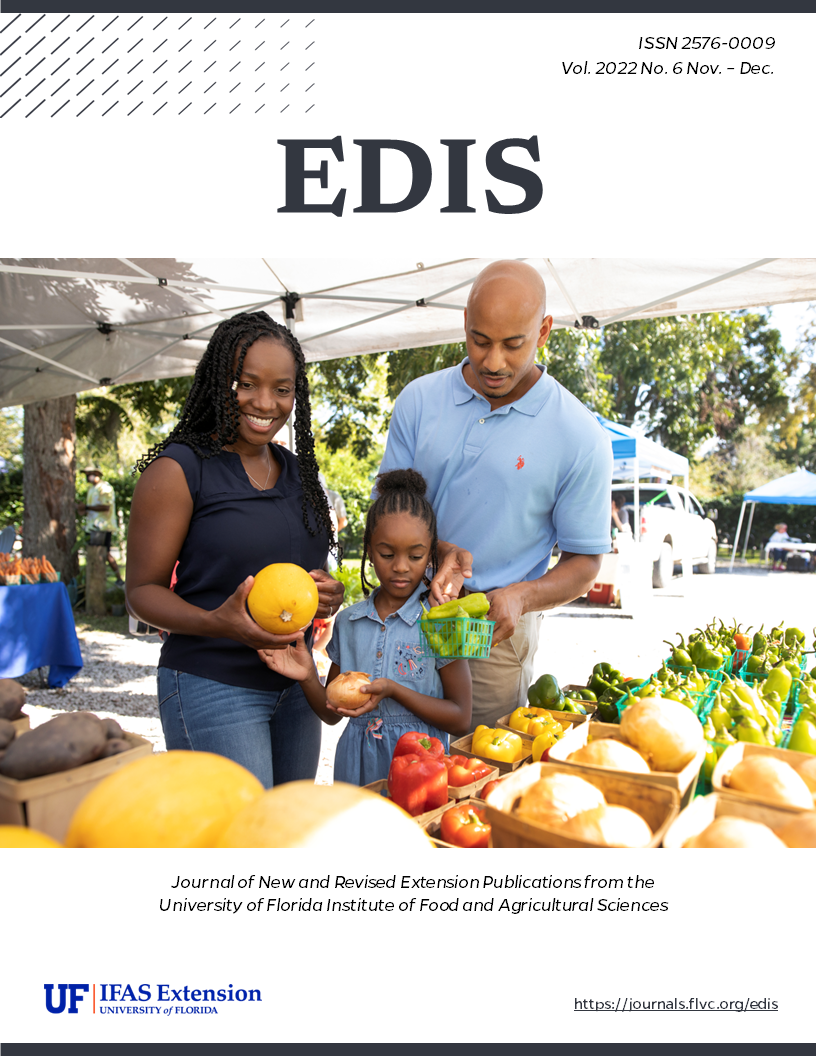Abstract
Florida is one of three US states (the other two being California and Hawaii) that have the climatic conditions to cultivate lychee. Given the growing consumer demand for this crop, the production of lychee has the potential to be a profitable crop for Florida growers. This publication estimates the costs and returns associated with operating a lychee grove in south and central Florida. It presents the results of field interviews with lychee growers and industry experts. Growers on average can expect to earn nearly $8,000 an acre per year from lychee production when there is a harvest, but climate variation causes inconsistent harvests. When making production decisions, growers must also consider increasing pressure from pests such as the lychee erinose mite, and strong foreign competition.
References
Bermudez, D.R. 2018. Lychee erinos mite. Tropical Fruit News 61(3):23-26.
Brown, J.W., J. Peña, T. Vazquez and J. Baixeras. 2002. Description of a new tortricid pest (Lepidoptera: Tortricidae: Olethreutinae) of litchi (Litchi chinensis) in Florida, with a review of Trotricid pests of Litchi worldwide. Proc. Entomol. Soc. Wash. 104(2)318-329.
Carrillo, D., Cruz, L.F.P., Revynthi, A.M., Duncan, R.E., Bauchan, G.R., Ochoa, R., Kendra, P.E., Bolton, S.J. 2020. Detection of the lychee erinose mite, Aceria litchii (Keifer) (Acari: Eriophyidae) in Florida, U.S.: A comparison with other alien populations. Insects 11(4): 235, 11 pp.
Crane, J. H. (2018). Tropical fruit production in Florida: Trials, tribulations and opportunities. In Proc. Fla. State Hort. Soc (Vol. 131).
Crane, J. H., Balerdi C.F. and Maguire I .2020. Lychee growing in the Florida home landscape. Retrieved from Electronic Data Information Source (EDIS) HS6. University of Florida, Gainesville, FL. https://edis.ifas.ufl.edu/publication/MG051
Evans, E. A., and Degner, R. L. 2005. Recent developments in world production and trade of lychee (Litchi chinensis): implications for Florida growers. In Proceedings of the Florida State Horticultural Society (Vol. 118, pp. 247-249). Florida State Horticultural Society.
Evans, E., Degner, R., and Morgan, K. (2004). Six Ways to Improve the Profitability of Lychee in South Florida. EDIS, 2004(18).
Florida Department of Agriculture and Consumer Services (FDACS). 2021. Lychee Erinose Mite. Retrieved from https://www.fdacs.gov/Agriculture-Industry/Pests-and-Diseases/Plant-Pests-and-Diseases/Lychee-Erinose-Mite
Knight, Jr, R. J. (2000). The lychee's history and current status in Florida. In I International Symposium on Litchi and Longan 558 (pp. 41-44).
Navia, D. Júnior, A.L.M., Gondim, M.G.C., Jr. de Mendonza, R.s. da Silva Pereira, P.R.V. Recent mite invasions in South America. In Potential Invasive Pests Agric Crop, 1st ed.; Peña, J.E., Ed. CABI: Oxfordshire, UK, 2013; pp. 251–287.
Peña, J.E. 1994. Update on status of pests of tropical fruit crops in south Florida. Proc. Fla. State Hort. Soc. 107:340-342.
Rafie, A. R., and Balerdi, C. F. 2002. International marketing of lychee and what is the future for Florida growers. In Proceedings of the Florida State Horticultural Society (Vol. 115, pp. 88-90).
Revynthi, A. M., Duncan, R. E., Mannion, C., Kendra, P. E., & Carrillo, D. 2020. Post-harvest paraffinic oil dips to disinfest lychee fruit of lychee erinose mite. Florida Entomologist, 103(2), 299-301.
United States Department of Agriculture Agricultural Marketing Service (USDA AMS). 2017. Agricultural marketing service. Retrieved from https://www.marketnews.usda.gov/mnp/fv-report-config-step1?type=termPrice
United States Environmental Protection Agency (EPA). 2016. What climate change means for Florida. EPA 430-F-16-011. Retrieved from https://www.epa.gov/sites/default/files/2016-08/documents/climate-change-fl.pdf

